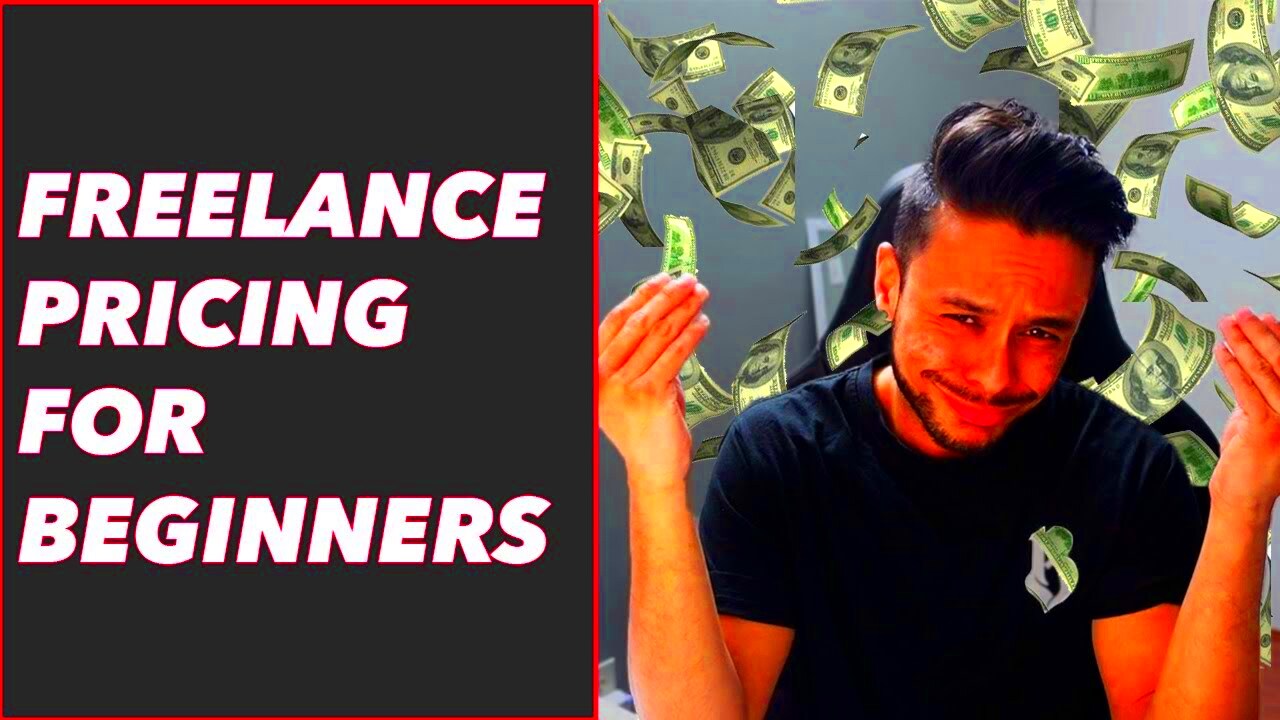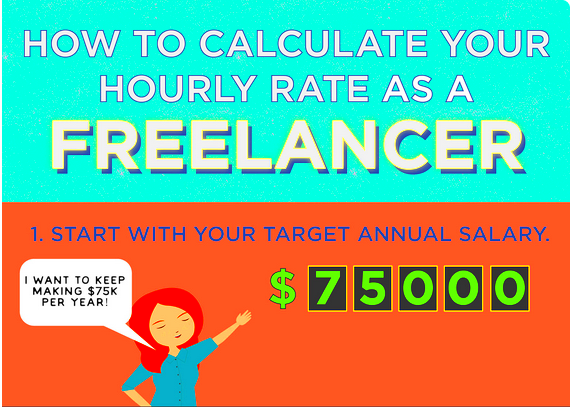Determining your freelance rates can be quite a challenge almost like trying to find your way through a maze. After spending years in the freelancing realm I can relate to the perplexity and hurdles that come with establishing pricing. It goes beyond choosing a figure; it's about striking a balance that mirrors your expertise, background and the worth you offer.
Freelance rates refer to the fees you set for your work. These rates can differ significantly based on factors like your area of specialization, the intricacy of the task and your experience. When determining your rate it's important to consider not just your expenses but also to account for your time and energy. Having a grasp of your value and the demand in the market is essential.
Take these factors into account when determining your fees.
- Your skill level: Beginners may start with lower rates, while experienced freelancers can command higher fees.
- Project complexity: More complex projects often warrant higher rates.
- Market demand: High demand for your skills can justify higher charges.
By grasping these factors you'll be able to establish rates that are both equitable and durable for your freelance journey.
Factors Influencing Your Rate

Determining a freelance rate goes beyond doing some quick calculations. It requires careful consideration of multiple factors, both personal and market related. Through my experiences, I’ve discovered that the secret to establishing a rate lies in comprehending and evaluating the different elements, at play.
Here are a few key elements that impact how much you charge as a freelancer.
- Experience and Skills: If you’ve been freelancing for a few years and have honed your skills, you can justify charging higher rates. For instance, a graphic designer with five years of experience can typically charge more than someone just starting out.
- Client’s Budget: Some clients may have a fixed budget. Understanding their constraints and negotiating within those limits while still valuing your work is crucial.
- Project Scope: Larger projects with more complex requirements will naturally command higher rates. Break down the scope and assess the time and effort required to complete the project.
- Market Rates: Research what others in your industry are charging. This doesn’t mean you have to match their rates, but it gives you a benchmark to work from.
- Your Availability: If you’re in high demand, you can set higher rates. Conversely, if your schedule is more flexible, you might adjust your rates to attract more clients.
By grasping these elements and their influence on your rate you can determine a fee that aligns with your value while remaining competitive in the industry.
Also Read This: How to Use Fiverr as a Freelancer
Setting Your Hourly Rate

Figuring out how much to charge per hour can be challenging, particularly if you’re just starting out as a freelancer. Based on my own experiences I’ve learned that establishing an hourly rate requires taking into account your expenses while also making sure you receive compensation for your skills and knowledge.
Here’s a simple way to determine your pay rate.
- Calculate Your Expenses: Start by figuring out your monthly expenses, including rent, utilities, and any other costs associated with running your freelance business.
- Determine Your Desired Income: Decide how much you want to earn annually. Break this down into a monthly figure and then into an hourly rate.
- Factor in Downtime: Freelancers often experience periods between projects. Include these downtimes in your calculations to ensure you’re not undercharging.
- Assess Your Market: Research the going rates in your industry and region. Adjust your rate based on your skill level and experience compared to others in your field.
- Test and Adjust: Start with an initial rate and see how it performs. You can adjust it based on client feedback and your own experiences.
By taking these actions you can establish a rate that not only reflects the worth of your work but also aligns with your financial objectives.
Also Read This: How to Promote Your Fiverr Account: A Comprehensive Guide
Determining Project-Based Fees

Determining fees for a project can be a bit of a juggling act similar to getting the right blend of spices for an Indian curry. In my opinion it’s not solely about the hours you’ll invest but also the worth you add to the project. This method tends to resonate with clients who favor a straightforward and set price over an hourly charge.
Here’s a breakdown of how to figure out fees based on a project.
- Understand the Project Scope: Begin by getting a comprehensive understanding of the project requirements. What’s the client’s vision? How complex is the task? For instance, designing a logo might involve multiple revisions, whereas a single-page flyer might be simpler.
- Estimate Your Time: Even though it’s a flat fee, you need to estimate how many hours you’ll spend on the project. Break down the tasks involved and estimate the time for each. This helps in ensuring you’re not undercharging.
- Consider Your Expertise: If you have specialized skills or extensive experience in a particular area, factor that into your pricing. For example, a seasoned content writer might charge more for high-quality, in-depth articles compared to a beginner.
- Factor in Additional Costs: Include any additional costs that may arise, such as purchasing stock images or paying for software tools. This way, you won’t end up absorbing extra expenses.
- Negotiate with the Client: Be open to discussing and negotiating the fee with the client. Sometimes clients might have a budget in mind, and you can adjust your fee accordingly while still ensuring it’s fair for your work.
By taking a close look at these factors you can determine a project fee that accurately represents your skills and hard work making sure both you and your client are happy with the agreement.
Also Read This: Discovering French Alternatives to Fiverr: Your Guide to Freelance Platforms
Comparing Rates with Industry Standards
When deciding on your pricing it can be helpful to benchmark your rates against industry norms. Based on my experience aligning your charges with the standards can give you a competitive edge and support your rationale for rates to clients.
Here’s a way to compare your rates more effectively.
- Research Industry Benchmarks: Start by researching the standard rates for your field. This might involve browsing job boards, freelancer platforms, or industry reports. For instance, a web developer in India might charge differently compared to one in the US.
- Analyze Competitor Pricing: Look at what your peers are charging for similar services. This doesn’t mean you need to match their rates exactly, but it gives you a ballpark figure to work with.
- Consider Your Unique Value: Reflect on what sets you apart from others. If you offer unique services or have specialized expertise, you can justify charging higher rates. Highlighting your unique selling points can help in negotiating higher fees.
- Stay Updated: The market is always evolving, so keep track of changes in industry standards. Regularly updating your rates based on current trends ensures that you remain relevant and competitive.
- Seek Feedback: If possible, ask for feedback from clients or industry peers. Their perspectives can provide valuable insights into whether your rates align with industry standards.
Keeping yourself updated and adjusting your rates to align with industry norms can help you maintain pricing that is just, competitive and a true reflection of your skills.
Also Read This: What to Do When a Buyer Doesn’t Respond on Fiverr
Adjusting Your Rates Over Time
Changing your rates gradually is a normal aspect of being a freelancer. Similar to adding spices to a dish you might need to adjust your rates as you gain more experience or as market conditions shift. Through my personal experiences I’ve come to realize that regularly updating your rates is crucial to keep pace with inflation and showcase your advancing skills.
Here’s how to approach adjusting your rates:
- Evaluate Your Experience: As you gain more experience and improve your skills, your rates should reflect this growth. Regularly assess your progress and consider raising your rates to match your increased value.
- Consider Market Changes: Economic factors and market demand can impact how much clients are willing to pay. Stay aware of these changes and adjust your rates accordingly. For example, during a period of high demand, you might be able to increase your fees.
- Revisit Your Expenses: Periodically review your business expenses. If costs rise, it’s reasonable to adjust your rates to ensure you’re covering your expenses and maintaining profitability.
- Communicate Clearly with Clients: When you decide to increase your rates, inform your existing clients in advance. Explain the reasons for the change and provide them with a timeline for the new rates to take effect.
- Test and Evaluate: Implement rate changes gradually and monitor their impact. Assess how clients respond and how it affects your workload and earnings. This will help you find the right balance.
It's common for freelancers to tweak their rates. By being careful and strategic about it you can make sure your prices are fair and in line with your progress and the current market situation.
Also Read This: How to Change PayPal Email on Fiverr
Communicating Your Rates to Clients
When it comes to sharing your pricing with clients it can be a challenge. It’s similar to presenting a meal how you convey the information is just as important as the actual details. In my experience being clear and confident in your communication goes a long way in establishing expectations and making sure everyone is aligned.
Here are some tips on how to convey your pricing to clients in a way.
- Be Clear and Transparent: Ensure that your rates are clearly outlined in your initial communication. Whether it’s through a proposal or a contract, make sure there’s no ambiguity. Clients appreciate transparency and are more likely to trust you when they understand your pricing structure.
- Explain the Value: When discussing your rates, emphasize the value you bring to the table. For example, if you’re a graphic designer, explain how your design will help enhance their brand’s image and drive engagement.
- Provide a Detailed Breakdown: Offer a breakdown of what’s included in your rates. This might include the number of revisions, additional services, or specific deliverables. A detailed breakdown helps clients understand what they’re paying for and prevents misunderstandings.
- Be Prepared to Justify: Be ready to explain why your rates are set at a particular level. Share your experience, expertise, and any unique skills you bring to the project. Clients are more likely to accept your rates if they understand the reasoning behind them.
- Maintain Professionalism: Approach the conversation with confidence and professionalism. Even if a client questions your rates, respond calmly and provide clear, rational explanations.
When you clearly convey your pricing you lay the groundwork for a harmonious collaboration and prevent any potential disagreements in the future.
Also Read This: What Are Some Key Differences Between Upwork and Fiverr?
Handling Negotiations and Discounts
Negotiating rates and managing discounts is an ability that improves with time. It’s similar to perfecting the recipe for a dosa finding the right mix of firmness and adaptability. Through my personal experiences I’ve discovered that approaching these conversations with tact can contribute to sustaining a positive rapport with clients while also ensuring fair compensation.
Here are a few suggestions for handling negotiations and discounts effectively.
- Know Your Bottom Line: Before entering negotiations, have a clear idea of the minimum rate you’re willing to accept. This will help you avoid agreeing to a rate that doesn’t meet your needs.
- Understand Client’s Budget: Ask about the client’s budget early in the conversation. Understanding their financial constraints can help you tailor your offer to meet their needs while staying within your rate range.
- Offer Value-Added Services: Instead of just lowering your rate, consider offering additional services or benefits. For instance, you might include extra revisions or bonus content as part of the package to add value without drastically cutting your fees.
- Be Open to Compromise: Sometimes, a little flexibility can go a long way. If a client is persistent, be open to finding a middle ground that works for both parties. This might involve adjusting your scope of work or payment terms.
- Communicate Clearly: Ensure that any agreed-upon changes to the rate or scope of work are clearly documented. This helps avoid any future misunderstandings and ensures both you and the client are on the same page.
Approaching negotiations and discounts with care and professionalism guarantees that both you and your clients are happy with the outcome fostering a positive working relationship.
Also Read This: Learn About Fiverr Level 1 Benefits: A Step-by-Step Guide
FAQ
How do I determine if my rates are too high or too low?
To assess whether your rates are fair conduct research on benchmarks in your industry gather input from clients and colleagues and reflect on your personal expertise and abilities. Consistently reviewing your rates against those of professionals in your field can offer valuable perspectives on whether adjustments to your pricing are necessary.
What should I do if a client questions my rates?
When a client asks about your rates take the opportunity to explain the value you bring to the table. Highlight your experience, the extent of the work you'll be doing and any special skills that set you apart for the project. By being open and self assured in your response you can help them understand why your pricing is fair.
Is it okay to offer discounts?
Providing discounts can be an effective approach to draw in customers or lock in a lasting agreement. Nevertheless it's crucial to make sure that discounts don't hinder your capacity to meet your expenses or undermine the worth of your offerings. Instead of solely reducing your prices it's often more advantageous to provide services that enhance the overall value.
How often should I adjust my rates?
It’s beneficial to revisit and modify your pricing once a year or whenever there’s a notable shift in your abilities, expertise or market dynamics. Consistently evaluating your rates helps, to align them with your present worth and the demand in the market.
What if a client is not willing to pay my rate?
If a client is not open to your proposed fee you have the option to either negotiate for a middle ground or assess if you are open to reducing your rate specifically for this project. Take some time to weigh, the potential advantages of collaborating with this client against the need to adjust your rate.
Conclusion
Setting and communicating your freelance rates is a journey that involves learning and adapting. Through my own experiences I’ve realized that recognizing your worth, taking market factors into account and approaching client interactions with clarity and confidence can greatly impact your freelancing career. It’s about finding a balance between appreciating your skills and being flexible enough to accommodate client needs. As you gain experience dont hesitate to review and adjust your rates. Its an ongoing process and staying adaptable will assist you in navigating the challenges of freelancing more smoothly and with greater satisfaction. Remember your rates should reflect your expertise and the value you provide to your clients.




